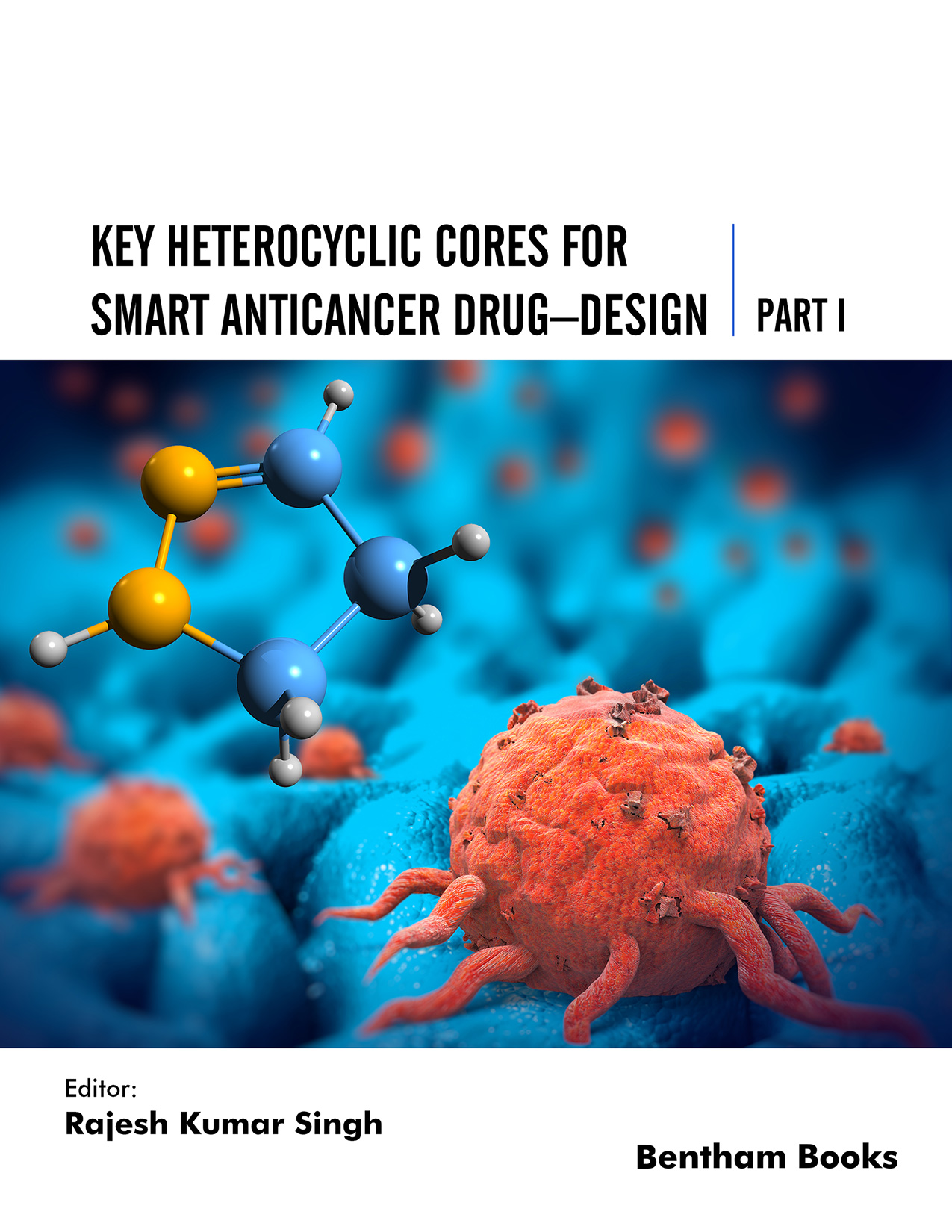Cancer, which is spreading worldwide, is becoming the leading cause of significant deaths. Today's most daunting task for global researchers is to develop anticancer leads with minimal side effects. Heterocyclic chemistry is an important and unique class of medicinal chemistry as many drugs being used in chemotherapy have a heterocyclic ring as their basic structure, despite various side effects.
The first part of this book "Key Heterocyclic Cores for Smart Anticancer Drug-Design" is focused on various green methodologies for the synthesis of these heterocyclic cores. Furthermore, different chapters provide insight into the structure-activity relationship (SAR) of heterocyclic cores to reveal different pharmacophores accountable for anticancer activity. The Part I comprises 6 scholarly-written review articles by leading researchers in the field, covering a broad range of topics.
The variety of natural compounds is indispensable for their anticancer action. For many years, these natural compounds have provided the basis for the development of diverse new classes of synthetic chemotherapeutic agents. In the first chapter of this book, Bachar et al. concentrate on recent research on various classes of natural scaffolds and their analogues that possess potent antitumour activity. Analysis of preclinical and/or clinically investigated natural compounds along with structural modification, structure-activity relationship, and molecular mechanisms of anticancer activity has also been discussed.
Recent efforts in the research and development of anticancer drugs derived from natural products have led to the identification of numerous heterocyclic terpenes that inhibit cell proliferation, metastasis, apoptosis, and other mechanisms. Chapter 2 by Chopra et al. explores the anticancer terpenoidal components that may promise and potentially open new opportunities for cancer therapy.
Among various heterocyclic scaffolds, benzothiazole (BT) is one of the most privileged moieties that exhibit a broad spectrum of biological activities such as anticancer, antidiabetic, anti-inflammatory, antiviral, antifungal, etc. The third chapter by Kumar et al. discusses the recent research done on benzothiazole scaffolds against the various biological targets for their anticancer activity. The chapter furnishes advancements on benzothiazole-containing drugs under clinical trials and those drugs that have been granted patents recently.
Nowadays, hybrid molecule drug designs attract a great deal of attention among organic and medicinal chemists. Among the different natural sources, quinoline, quinolone, and their hybrid derivatives are the most privileged ones. In Chapter 4, Panda et al. reviews the SAR study of recent literature (2017–2020) of hybrid quinoline and quinolone derivatives that act as anticancer agents through various mechanisms such as Bcl-2 inhibition, ALDH inhibition, kinase inhibition, topo-II, and EGFR-TK inhibition, etc.
Among all heterocycles, tetrazoles have gained attention in recent years due to their vast biological activity spectrum. The tetrazole ring has a structural similarity to carboxylic acids and hence serves as a bio isostere analogue. Chapter 5 by Unnamatala et al. explores the synthetic chemistry of the tetrazole nucleus and SAR studies of various tetrazole derivatives with promising activity, bioavailability against both drug-resistant and sensitive cancers, and reduced toxicity with numerous mechanisms of action.
Researchers and scientists have paid much attention to the drug design and drug discovery of nitrogen (N) and oxygen (O) based heterocyclic compounds in the last decade. Chapter 6 by Choudhary et al. compiles a dataset of advances (2017-2020) in various nitrogen and oxygen-containing heterocyclic rings with anticancer activities along with their structure-activity relationship (SAR) studies.
The editors would like to convey their gratitude to all contributors s for their hard and scholarly work. We are also grateful to Mr. Mahmood Alam (Director of Publication) and Ms. Humaira Hashmi (Manager Publication) of Bentham Science Publisher, who took over the management of the production of this book under the challenging circumstances of the COVID pandemic and whose contribution is much appreciated. We are confident that this book will help researchers, pharmacologists, and medicinal chemists learn about designing new and valuable novel heterocyclic anticancer drugs from synthetic and natural sources based on structure-activity-relationship studies.
Rajesh Kumar Singh
Department of Pharmaceutical Chemistry
Shivalik College of Pharmacy, Nangal,
IKG, Punjab Technical University
Jalandhar, Punjab, 140126,
India

